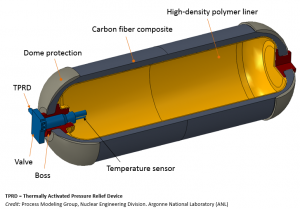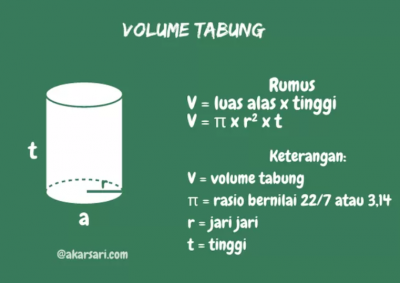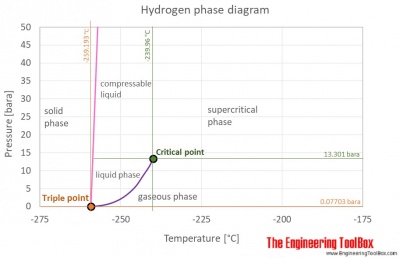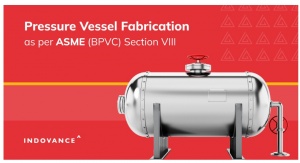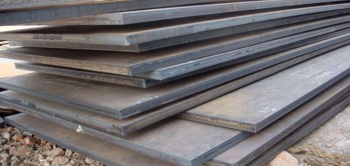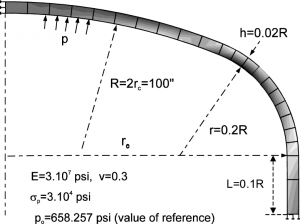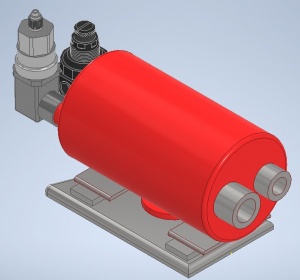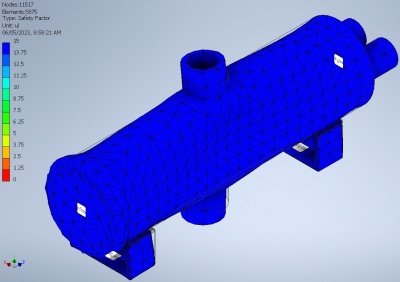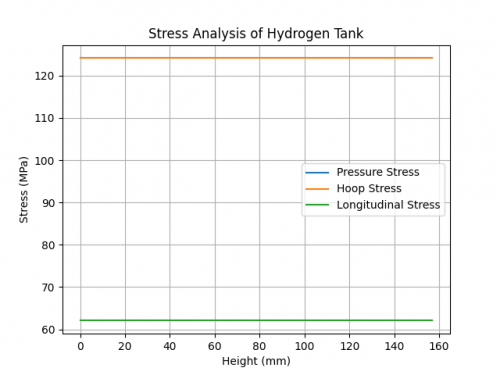Adriel Reuben Matthew
Contents
[hide]Know Me More!
Halo semua, nama saya Adriel Reuben Matthew.. Biasa dipanggil Reuben atau Adriel.. Saya adalah Mahasiswa Teknik Mesin FTUI angkatan 2021 dan NPM saya adalah 2106732935 .. Saya adalah bagian dari Kelas METODE NUMERIK-03
My Motto is "Never Let Them Know Your Next Move!"
I. Chat with ChatGPT "What is Consciousness?"
WHAT IS CONSCIOUSNESS?
Consciousness refers to the state of being aware of and able to perceive both the external world and one's internal mental experiences. It is often described as the subjective experience of thoughts, sensations, emotions, and perceptions. While consciousness is a deeply complex and multifaceted phenomenon, it is generally characterized by qualities such as self-awareness, subjective experience, and the ability to process and integrate information.
The nature of consciousness has been a subject of philosophical inquiry and scientific study for centuries, and it remains a topic of ongoing debate and exploration. There are several theories and perspectives attempting to explain consciousness, and no single consensus has been reached thus far. Some prominent theories include:
Dualism: This perspective posits that consciousness is separate from the physical body and brain. According to dualism, there is a non-physical or spiritual aspect of consciousness that exists independently of the physical world.
Materialism: Materialistic theories argue that consciousness is solely a product of physical processes in the brain. According to this view, all mental experiences and phenomena can ultimately be explained in terms of the activity and interactions of neurons and other neural mechanisms.
Panpsychism: Panpsychism suggests that consciousness is a fundamental and ubiquitous feature of the universe. According to this view, consciousness is not solely confined to human or animal brains but is a property of all matter at some level, even inanimate objects.
Integrated Information Theory: Proposed by neuroscientist Giulio Tononi, this theory suggests that consciousness arises from the integrated and complex interactions among different brain regions. It emphasizes the generation of a unified, integrated experience rather than focusing on specific neural processes.
It's important to note that the scientific understanding of consciousness is still evolving, and researchers continue to explore various aspects of the phenomenon. While progress has been made in unraveling some of the mysteries surrounding consciousness, many questions remain unanswered.
WHAT IS SELF CONSCIOUSNESS?
Self-consciousness refers to the awareness and recognition of oneself as a distinct individual with a unique identity, thoughts, beliefs, and experiences. It involves the ability to reflect on and have subjective knowledge of one's own mental states, actions, and characteristics. Self-consciousness is closely related to self-awareness and introspection.
There are two primary aspects of self-consciousness:
Objective self-consciousness: This aspect involves the ability to recognize oneself as an object of observation or evaluation by others. It involves being aware of how one appears to others, adhering to social norms, and experiencing self-evaluation and self-judgment. Objective self-consciousness often involves comparing oneself to others and feeling the pressure to meet societal expectations.
Subjective self-consciousness: This aspect involves the introspective awareness of one's thoughts, emotions, desires, and personal experiences. It includes having a sense of personal identity, continuity, and a narrative of one's life. Subjective self-consciousness allows individuals to reflect on their internal states, understand their own beliefs and values, and develop a sense of autonomy and self-reflection.
Self-consciousness plays a crucial role in shaping our social interactions, behavior, and self-perception. It enables us to navigate social situations, consider how others perceive us, and engage in self-reflection and self-improvement. However, excessive self-consciousness can lead to self-doubt, anxiety, and self-consciousness can also be influenced by cultural and societal factors, as different cultures may place varying emphasis on individualism, self-expression, and social conformity.
Overall, self-consciousness is a complex psychological phenomenon that contributes to our understanding of ourselves and our interactions with others.
THE RELATIONSHIP BETWEEN SELF-CONSCIOUSNESS AND COLLEGE LIFE
Self-consciousness refers to the awareness and recognition of oneself as a distinct individual with unique thoughts, beliefs, and experiences. When it comes to college life, self-consciousness can have a significant impact on various aspects of a student's experience. Here are some ways in which self-consciousness can relate to college life:
Social Interactions: Self-consciousness can influence how students interact with their peers, professors, and other individuals in the college community. It may affect their confidence levels, social skills, and willingness to participate in discussions, group activities, or social events. Students who are more self-conscious may be more cautious about expressing themselves or seeking social connections.
Academic Performance: Self-consciousness can also impact a student's academic performance. Excessive self-consciousness may lead to anxiety or self-doubt, which can hinder concentration, information processing, and the ability to express ideas effectively. On the other hand, a healthy level of self-consciousness can motivate students to strive for excellence and take responsibility for their learning.
Identity Development: College is a time when many students explore and develop their identities. Self-consciousness plays a role in this process as students reflect on their values, beliefs, and goals. It can influence decision-making, career choices, and the exploration of personal interests and passions. Developing a positive and authentic self-consciousness can contribute to a sense of purpose and direction in college life.
Personal Growth: College provides opportunities for personal growth and self-discovery. Self-consciousness allows students to reflect on their strengths, weaknesses, and areas for improvement. It can drive self-reflection, self-evaluation, and the pursuit of personal development. By becoming more self-conscious, students can gain a better understanding of themselves, their values, and their aspirations.
Well-being and Mental Health: Self-consciousness can impact a student's well-being and mental health. Excessive self-consciousness, especially in the form of self-criticism or negative self-judgment, can contribute to stress, anxiety, and low self-esteem. Developing a healthy self-consciousness that includes self-acceptance, self-care, and self-compassion is important for maintaining mental well-being throughout college life.
In summary, self-consciousness has a multifaceted relationship with college life. It affects social interactions, academic performance, identity development, personal growth, and overall well-being. Striking a balance between self-awareness and self-acceptance can contribute to a fulfilling and successful college experience.
II. Design & Optimization of Pressurized Hydrogen Storage
Berikut adalah konsep desain dan optimasi untuk penyimpanan hidrogen bertekanan 8 bar dengan kapasitas 1 liter dan budget maksimal Rp500.000:
Pemilihan Wadah Penyimpanan:
Pilih wadah yang terbuat dari bahan yang kuat dan tahan tekanan, seperti aluminium atau baja. Pastikan wadah memiliki kapasitas minimal 1 liter dan mampu menahan tekanan hingga 8 bar. Pertimbangkan penggunaan wadah penyimpanan yang telah tersedia di pasaran untuk mengoptimalkan penggunaan budget.
Sistem Pengunci dan Segel:
Pastikan wadah dilengkapi dengan sistem pengunci yang aman dan tahan tekanan. Gunakan segel yang berkualitas tinggi untuk mencegah kebocoran hidrogen. Perhatikan biaya pengadaan sistem pengunci dan segel agar sesuai dengan budget.
Sistem Pengisi:
Perhatikan sistem pengisi yang sederhana namun efektif dengan memperhatikan budget. Gunakan katup pengisi yang kompatibel dengan wadah penyimpanan dan mampu menangani tekanan 8 bar. Pastikan sistem pengisi memiliki mekanisme pengaman dan kontrol tekanan yang memadai.
Pengujian dan Sertifikasi:
Lakukan pengujian pada wadah penyimpanan untuk memastikan keamanan dan kebocoran hidrogen yang minimal. Pastikan wadah memenuhi standar keamanan dan sertifikasi yang berlaku. Cari tahu apakah ada laboratorium atau lembaga yang dapat melakukan pengujian dengan biaya yang terjangkau.
Efisiensi Biaya:
Pertimbangkan penggunaan material yang ekonomis namun tetap memenuhi kebutuhan desain dan tekanan yang diinginkan. Cari pemasok yang menawarkan harga yang kompetitif untuk material dan komponen yang dibutuhkan. Perhatikan kemungkinan menggunakan komponen bekas yang masih dalam kondisi baik untuk mengoptimalkan budget.
Perencanaan Anggaran: Rencanakan anggaran dengan cermat untuk memastikan semua komponen, material, dan biaya pengujian tercakup dalam budget maksimal Rp500.000. Prioritaskan elemen desain yang kritis dan tetap mengutamakan keamanan. Jika diperlukan, pertimbangkan mencari alternatif sumber dana atau pendanaan tambahan untuk memastikan ketersediaan budget yang mencukupi. Perlu diingat bahwa dengan budget yang terbatas, desain yang sangat kompleks atau material yang khusus mungkin sulit untuk dicapai. Namun, dengan konsep di atas, Anda dapat menghasilkan desain penyimpanan hidrogen yang sederhana namun sesuai dengan persyaratan dasar, seperti kapasitas 1 liter dengan tekanan 8 bar, dan tetap memperhatikan faktor keamanan dan keandalan dalam penggunaan hidrogen.
(discussed with chatGPT)
HOW TO UTILIZE HYDROGEN AS A VEHICLE FUEL
Hydrogen Production: Hydrogen can be produced through various methods, such as electrolysis of water, reforming natural gas, or biomass gasification. Electrolysis is a common method that uses electricity to split water into hydrogen and oxygen. It's important to ensure that the hydrogen production process is efficient and environmentally friendly.
Hydrogen Storage: Hydrogen is a lightweight gas, so it needs to be stored in a suitable manner. There are a few options for hydrogen storage, including compressed gas, liquid hydrogen, and solid-state storage. Compressed gas storage involves compressing hydrogen gas and storing it in high-pressure tanks. Liquid hydrogen storage requires cooling hydrogen to very low temperatures. Solid-state storage involves storing hydrogen within a solid material, such as metal hydrides.
Vehicle Fueling Infrastructure: Establishing a hydrogen fueling infrastructure is crucial for widespread adoption of hydrogen as a vehicle fuel. This infrastructure includes hydrogen production facilities, storage facilities, and hydrogen refueling stations. Building a network of refueling stations is essential to ensure that hydrogen-powered vehicles have access to fuel during their journeys.
Hydrogen Fuel Cell Vehicles (FCVs): Hydrogen fuel cell vehicles are one of the main ways to utilize hydrogen as a vehicle fuel. FCVs use hydrogen to generate electricity through a chemical reaction in the fuel cell. This electricity powers an electric motor, propelling the vehicle. FCVs produce only water vapor as a byproduct, making them environmentally friendly.
Hydrogen Internal Combustion Engine (ICE) Vehicles: Another way to utilize hydrogen as a vehicle fuel is by using hydrogen in internal combustion engines designed specifically for hydrogen. These engines combust hydrogen to generate mechanical energy, which drives the vehicle. Hydrogen ICE vehicles may require modifications to the engine and fueling systems compared to traditional gasoline or diesel engines.
Safety Considerations: Hydrogen is highly flammable and requires careful handling to ensure safety. Safety measures should be implemented throughout the hydrogen production, storage, and refueling processes. It's essential to follow regulations, industry standards, and best practices to mitigate risks associated with hydrogen.
Advancing Hydrogen Technologies: Ongoing research and development are crucial to improve hydrogen production, storage, and utilization technologies. This includes enhancing the efficiency of electrolysis processes, developing advanced hydrogen storage methods, and improving the performance and durability of fuel cells and hydrogen engines.
It's worth noting that transitioning to hydrogen as a vehicle fuel involves challenges such as infrastructure development, cost considerations, and mass production of hydrogen vehicles. However, as technology advances and the infrastructure expands, hydrogen has the potential to play a significant role in a sustainable transportation future.
HOW TO UTILIZE HYDROGEN TANK AS A STORAGE OF THE SOURCE OF VEHICLE FUEL
Tank Selection: Choose a suitable hydrogen tank for storage. There are different types of tanks available, including high-pressure gas tanks, liquid hydrogen tanks, and solid-state storage systems. Consider factors such as the required range, weight, cost, and safety when selecting a tank.
Tank Installation: Install the hydrogen tank in the vehicle according to the manufacturer's guidelines and safety standards. The tank should be securely mounted and properly integrated into the vehicle's fuel system.
Hydrogen Filling: Refuel the hydrogen tank using a compatible refueling system. Ensure that the refueling process follows safety protocols and guidelines. It's essential to use dedicated hydrogen refueling stations that are equipped to handle hydrogen fueling.
Safety Measures: Implement safety measures for handling hydrogen. This includes proper sealing and venting systems, leak detection, and adherence to safety regulations and standards. Regular inspections and maintenance of the tank and fueling system are important to ensure safe operation.
Pressure Regulation: Hydrogen tanks store the gas under high pressure. It's necessary to regulate the pressure before supplying the hydrogen to the vehicle's engine or fuel cell system. Pressure regulators or control valves are typically used for this purpose.
Fuel Delivery System: Ensure that the vehicle's fuel delivery system is compatible with hydrogen. Hydrogen fuel cell vehicles require a fuel cell stack to convert hydrogen into electricity, while hydrogen internal combustion engine vehicles may require modifications to accommodate hydrogen as a fuel source.
Monitoring and Maintenance: Regularly monitor the hydrogen tank's pressure, integrity, and performance. Implement a maintenance schedule to ensure the tank remains in optimal condition. Follow the manufacturer's guidelines for maintenance, inspection, and replacement of components.
Safety Training: Provide appropriate safety training to vehicle owners, operators, and maintenance personnel. It's important to educate individuals about the properties of hydrogen, safe handling practices, and emergency procedures.
Hydrogen Availability: Consider the availability of hydrogen refueling infrastructure in your area. Ensure that there are adequate hydrogen refueling stations along your planned routes to support your vehicle's fueling needs.
Remember that utilizing hydrogen as a vehicle fuel requires careful consideration of safety, infrastructure, and technological requirements. Always adhere to safety guidelines and regulations to ensure the safe and efficient use of hydrogen as a fuel source.
III. Hydrogen Storage Designing Operation
CUSTOMER REQUIREMENTS
Seperti yang sudah dijelaskan sebelumnya, customer requirement yang harus diperhatikan dalam designing and optimizing hydrogen storage tank adalah sebagai berikut :
1. Volume tangki yang dibutuhkan adalah 1000 ml atau 1 liter
2. Tekanan hydrogen sebesar 8 bar
3. Biaya maximal yang diberikan adalah Rp500.000
4. Nantinya tangki ini akan diletakkan pada suhu ruang normal (23°C)
5. Terdapat port input dan port output untuk mengisi dan mengeluarkan hydrogen yang ada dalam tangki
6. Tambahkan regulator tekanan dan sensor tekanan pada port output tangki
PERHITUNGAN VOLUME TANGKI
Sesuai dengan Customer Requirement yang ditulis diatas, volume yang diinginkan adalah 1 Liter atau 1000 cm^3
untuk diameter awal tabung, saya menggunakan acuan dimensi bagasi honda beat :
"Honda BeAT 125cc 2023 memiliki kapasitas bagasi sebesar 12 liter. Bagasi ini terletak di bawah jok dan memiliki dimensi L’300 x W180 x H 200 mm. Kapasitas ini cukup untuk membawa barang-barang pribadi seperti tas, jaket, dan peralatan elektronik"
maka dari itu, diameter yang di-set untuk perancangan tangki ini adalah sebesar 90 mm setelah diameter tangkinya sudah diketahui, maka akan dilakukan perhitungan untuk mendapatkan tinggi tangki
h = 1.000.000 / 3,14 x 45 x 45 = 157,26 mm
Maka tinggi tabung yang akan dibuat adalah sebesar 157,26 mm
MENDEFINISIKAN FASA HYDROGEN (23°C)
Berdasarkan diagram fasa tekanan vs suhu (diagram PT) disamping,dapat diketahui bahwa hidrogen dengan tekanan 8 bar pada suhu 23°C berada pada gaseous phase atau fase gas
PERHITUNGAN DESIGN TANGKI BERDASARKAN BAHAN DAN MATERIAL
ASME VII Pressure Vessels Standarization
ASME Section VIII adalah bagian dari American Society of Mechanical Engineers (ASME) Boiler and Pressure Vessel Code (BPVC). Bagian ini mengatur desain dan konstruksi bejana tekan atau pressure vessels. Pressure vessel merupakan wadah yang dirancang untuk menahan tekanan internal yang lebih tinggi daripada tekanan atmosfer sekitarnya. Mereka digunakan dalam berbagai industri seperti petrokimia, industri makanan dan minuman, energi, dan sektor lainnya.
ASME Section VIII memiliki beberapa divisi yang mencakup persyaratan yang berbeda untuk pressure vessels dengan berbagai jenis dan ukuran. Beberapa divisi yang umum ditemui adalah:
Division 1: Divisi ini berlaku untuk pressure vessels dengan tekanan desain yang relatif rendah dan ukuran yang kecil hingga menengah. Divisi 1 memberikan pedoman untuk desain, bahan, fabrikasi, inspeksi, pengujian, dan sertifikasi pressure vessels. Persyaratan ini mencakup batas kekuatan, ketebalan dinding, penyambungan, pengelasan, pengujian kebocoran, dan faktor keamanan.
Division 2: Divisi ini berlaku untuk pressure vessels dengan tekanan desain yang lebih tinggi dan lebih kompleks. Division 2 memberikan pedoman yang lebih rinci untuk analisis kekuatan dan desain pressure vessels yang lebih kompleks. Divisi ini memperhitungkan faktor-faktor seperti deformasi, kelelahan, kriogenik, dan perlakuan panas.
Division 3: Divisi ini berfokus pada desain dan konstruksi pressure vessels yang digunakan dalam industri nuklir. Persyaratan di Division 3 meliputi bahan, desain, konstruksi, pengujian, dan inspeksi pressure vessels yang tahan radiasi dan tekanan yang tinggi.
ASME Section VIII memastikan bahwa pressure vessels yang dibuat sesuai dengan standar ini memenuhi persyaratan keamanan yang ketat untuk melindungi manusia, lingkungan, dan properti. Desain dan fabrikasi pressure vessels yang mematuhi ASME Section VIII harus disertifikasi oleh inspektur berwenang sebelum digunakan.
Penting untuk dicatat bahwa penjelasan di atas hanya memberikan gambaran umum tentang ASME Section VIII Pressure Vessels. Jika Anda memiliki pertanyaan atau perlu informasi lebih lanjut, direkomendasikan untuk merujuk ke dokumen asli ASME BPVC atau berkonsultasi dengan ahli yang berpengalaman dalam desain dan fabrikasi pressure vessels.
Untuk membuat tangki hydrogen dengan tekanan 8 bar perlu menggunakan jenis mild steel yang memenuhi persyaratan kekuatan dan keamanan yang sesuai. Dalam kasus ini, material yang biasa digunakan adalah mild steel dengan kualitas terbaik yang disebut sebagai "pressure vessel quality" atau kualitas tangki tekanan.
Salah satu jenis mild steel yang sering digunakan untuk pressure vessel adalah ASTM A516 Grade 70. Baja ini memiliki sifat mekanik dan kekuatan yang baik, serta mampu menahan tekanan yang relatif tinggi. ASTM A516 Grade 70 adalah baja karbon dengan kandungan karbon rendah, yang biasanya dipilih untuk aplikasi pressure vessel karena ketangguhannya yang baik dan kemampuannya menahan tekanan tinggi.
ASTM A36 VS ASTM A516 GRADE 70
ASTM A36 dan ASTM A516 Grade 70 adalah dua jenis baja yang umum digunakan dalam berbagai aplikasi industri. Meskipun keduanya memiliki beberapa kesamaan, terdapat perbedaan signifikan dalam komposisi kimia, kekuatan, dan penggunaan yang disarankan. Berikut ini adalah perbandingan antara ASTM A36 dan ASTM A516 Grade 70:
Komposisi Kimia:
ASTM A36: ASTM A36 merupakan baja karbon rendah yang umumnya mengandung karbon sekitar 0,25% hingga 0,29%, dengan sedikit tambahan elemen lain seperti mangan, silikon, dan fosfor. ASTM A516 Grade 70: ASTM A516 Grade 70 juga merupakan baja karbon rendah, tetapi memiliki kandungan karbon yang sedikit lebih tinggi, yaitu sekitar 0,27% hingga 0,31%. Selain itu, ASTM A516 Grade 70 biasanya memiliki tambahan elemen seperti mangan, fosfor, silikon, dan sulfur dalam jumlah terbatas.
Kekuatan Mekanik:
ASTM A36: ASTM A36 memiliki kekuatan tarik minimum sekitar 400 hingga 550 MPa dan kekuatan luluh minimum sekitar 250 MPa. Baja ini biasanya digunakan dalam struktur yang tidak mengalami tekanan yang signifikan. ASTM A516 Grade 70: ASTM A516 Grade 70 memiliki kekuatan tarik minimum sekitar 485 hingga 620 MPa dan kekuatan luluh minimum sekitar 260 MPa. Baja ini dirancang khusus untuk digunakan dalam pressure vessel dengan tekanan yang tinggi dan suhu yang rendah hingga sedang.
Penggunaan yang Disarankan:
ASTM A36: ASTM A36 umumnya digunakan dalam struktur bangunan, jembatan, platform, dan komponen lain yang tidak memerlukan ketahanan terhadap tekanan atau suhu tinggi. ASTM A516 Grade 70: ASTM A516 Grade 70 digunakan khusus dalam pembuatan pressure vessel yang bekerja pada tekanan dan suhu tinggi, seperti tangki penyimpanan gas, boiler, dan peralatan industri lainnya.
THE EQUATION
1. Material Allowable Stress Value STM A516 Grade 70 memiliki nilai minimum kekuatan luluh sekitar 38-41 ksi (kilopound per square inch), atau sekitar 260-280 MPa (megapascal). nilai yang diambil adalah 39 ksi atau 268.9 Mpa
Allowable Stress Value =' 2/3 x Yield Strength = 2/3 x 39 = 26 Ksi
Tipe las yang akan digunakan adalah Double welded-butt joint: Pada sambungan las double welded-butt joint, dua kali pengelasan dilakukan pada kedua sisi sambungan untuk meningkatkan kekuatan dan integritas struktur. Metode ini sering digunakan pada tangki tekanan untuk memberikan keamanan tambahan dan memastikan kekuatan yang memadai.
Metode penyambungan las ini memiliki nilai E (Efficiency Factor) sebesar 0.85
Thickness formula for circumferential stress direction :
Thickness formula for longitudinal stress direction :
A. E = 0.85
B. P = 8 Bar = 116 Psi
C. R = 45 mm = 1.772 inch
D. S = 70.000 Psi
E. Corrosion Allowance = 2 mm = 0.0787 inch
PERHITUNGAN t
t circumferential = 116 x (1.772 + 0.0787) / (70.000 x 0.85) - (0.6 x 116) = 0.0361 inch
0.00356 + corrosion allowance = 0.00361 + 0.0787 = 0.1148 inch = 2.92 mm
t longitudinal = 116 x (1.772 + 0.0787) / (2 x 70.000 x 0.85) + (0.4 x 116) = 0.0018 Inch
0.00356 + corrosion allowance = 0.0018 + 0.0787 = 0.0805 inch = 2.04 mm
Berdasarkan perhitungan diatas, maka untuk minimal ketebalan bahannya adalah 2.92 mm
Jenis Pressure Vessel Head Type
Jenis Vessel Head yang akan digunakan adalah Torispherical Heads
Terdapat beberapa jenis pressure vessel head yang cocok untuk membuat tangki hydrogen dengan tekanan 8 bar dan material ASTM A516 Grade 70 dengan tipe sambungan double welded butt joint. Beberapa opsi yang mungkin menjadi pertimbangan adalah:
Hemispherical heads (kepala hemispherical): Hemispherical heads memiliki bentuk setengah bola dengan radius yang sama dengan diameter tangki. Keunggulan kepala hemispherical adalah distribusi tekanan yang merata dan kemampuan untuk menahan tekanan yang tinggi. Namun, penggunaan kepala hemispherical juga dapat mempengaruhi efisiensi penggunaan material.
Perbedaan antara pressure vessel head type hemispherical (kepala hemispherical) dan ellipsoidal (kepala ellipsoidal) terletak pada bentuknya. Berikut adalah perbedaan utama antara keduanya:
Bentuk: Hemispherical heads memiliki bentuk setengah bola dengan radius yang sama dengan diameter tangki. Mereka memiliki lekukan yang lebih dalam dan lengkungan yang lebih tajam. Sedangkan, ellipsoidal heads memiliki bentuk seperti setengah ellipsoid dengan radius yang berbeda untuk bagian cembung dan bagian datar. Mereka memiliki lekukan yang lebih lembut dan lengkungan yang lebih melengkung.
Distribusi tekanan: Kepala hemispherical memberikan distribusi tekanan yang merata di seluruh permukaan kepala. Hal ini membuatnya mampu menahan tekanan yang tinggi dan mengurangi risiko konsentrasi tekanan pada satu titik tertentu. Di sisi lain, kepala ellipsoidal juga memberikan distribusi tekanan yang baik, meskipun tidak sebaik kepala hemispherical. Kepala ellipsoidal memiliki transisi yang lebih lembut antara bagian cembung dan bagian datar, yang dapat mengurangi tegangan konsentrasi.
Efisiensi material: Hemispherical heads memiliki efisiensi material yang lebih rendah dibandingkan dengan ellipsoidal heads. Hal ini karena kepala hemispherical memiliki lengkungan yang lebih tajam dan lekukan yang lebih dalam, sehingga membutuhkan lebih banyak material untuk dibentuk. Sementara itu, kepala ellipsoidal memiliki lekukan yang lebih lembut dan lengkungan yang lebih melengkung, sehingga memungkinkan penggunaan material yang lebih efisien.
VISUALIZATION AND STRESS ANALYSIS USING AUTODESK INVENTOR
Gambar disamping adalah konsep pertama dari design tangki yang saya buat. Konsep ini digunakan sebagai mappingan awal posisi penempatan selang-selang, sensor, dan regulator dari tangki.
Dan gambar di samping merupakan hasil tangki yang sudah di desain ulang.. Terdapat perubahan di bagian lubang selang, desain bodi, dan juga dudukkan dari tangki. Namun yang masih sama adalah posisi dari sensor dan regulatornya.
Dan berikut adalah hasil stress analysis dan safety dari tangki. Peningkatan kekuatan stress masih bisa ditingkatkan dengan melakukan beberapa improvement, mulai dari improvement ketebalan bahan, peningkatan nilai safety factor, dll
NUMERICAL STRESS ANALYSIS CODING
import math import pandas as pd import matplotlib.pyplot as plt
def calculate_stress_pressure(diameter, thickness, pressure):
radius = diameter / 2 stress = pressure * radius / thickness return stress
def calculate_stress_hoop(diameter, thickness, pressure):
radius = diameter / 2 hoop_stress = pressure * diameter / (2 * thickness) return hoop_stress
def calculate_stress_longitudinal(diameter, thickness, pressure):
radius = diameter / 2 longitudinal_stress = pressure * radius / (2 * thickness) return longitudinal_stress
def generate_stress_table(diameter, thickness, pressure, height):
stress_table = []
for h in range(int(height) + 1):
stress_pressure = calculate_stress_pressure(diameter, thickness, pressure)
stress_hoop = calculate_stress_hoop(diameter, thickness, pressure)
stress_longitudinal = calculate_stress_longitudinal(diameter, thickness, pressure)
stress_table.append([h, stress_pressure, stress_hoop, stress_longitudinal])
return stress_table
def generate_stress_plot(stress_table):
height = [entry[0] for entry in stress_table]
pressure_stress = [entry[1] for entry in stress_table]
hoop_stress = [entry[2] for entry in stress_table]
longitudinal_stress = [entry[3] for entry in stress_table]
plt.plot(height, pressure_stress, label='Pressure Stress')
plt.plot(height, hoop_stress, label='Hoop Stress')
plt.plot(height, longitudinal_stress, label='Longitudinal Stress')
plt.xlabel('Height (mm)')
plt.ylabel('Stress (MPa)')
plt.title('Stress Analysis of Hydrogen Tank')
plt.legend()
plt.grid(True)
plt.show()
def main():
diameter = 90 thickness = 2.9 pressure = 8 height = 157.26
stress_table = generate_stress_table(diameter, thickness, pressure, height) df = pd.DataFrame(stress_table, columns=["Height (mm)", "Pressure Stress (MPa)", "Hoop Stress (MPa)", "Longitudinal Stress (MPa)"]) print(df.to_string(index=False)) generate_stress_plot(stress_table)
if __name__ == '__main__':
main()
Height (mm) Pressure Stress (MPa) Hoop Stress (MPa) Longitudinal Stress (MPa)
0 124.137931 124.137931 62.068966
1 124.137931 124.137931 62.068966
2 124.137931 124.137931 62.068966
3 124.137931 124.137931 62.068966
4 124.137931 124.137931 62.068966
5 124.137931 124.137931 62.068966
6 124.137931 124.137931 62.068966
7 124.137931 124.137931 62.068966
8 124.137931 124.137931 62.068966
9 124.137931 124.137931 62.068966
10 124.137931 124.137931 62.068966
11 124.137931 124.137931 62.068966
12 124.137931 124.137931 62.068966
13 124.137931 124.137931 62.068966
14 124.137931 124.137931 62.068966
15 124.137931 124.137931 62.068966
16 124.137931 124.137931 62.068966
17 124.137931 124.137931 62.068966
18 124.137931 124.137931 62.068966
19 124.137931 124.137931 62.068966
20 124.137931 124.137931 62.068966
21 124.137931 124.137931 62.068966
22 124.137931 124.137931 62.068966
23 124.137931 124.137931 62.068966
24 124.137931 124.137931 62.068966
25 124.137931 124.137931 62.068966
26 124.137931 124.137931 62.068966
27 124.137931 124.137931 62.068966
28 124.137931 124.137931 62.068966
29 124.137931 124.137931 62.068966
30 124.137931 124.137931 62.068966
31 124.137931 124.137931 62.068966
32 124.137931 124.137931 62.068966
33 124.137931 124.137931 62.068966
34 124.137931 124.137931 62.068966
35 124.137931 124.137931 62.068966
36 124.137931 124.137931 62.068966
37 124.137931 124.137931 62.068966
38 124.137931 124.137931 62.068966
39 124.137931 124.137931 62.068966
40 124.137931 124.137931 62.068966
41 124.137931 124.137931 62.068966
42 124.137931 124.137931 62.068966
43 124.137931 124.137931 62.068966
44 124.137931 124.137931 62.068966
45 124.137931 124.137931 62.068966
46 124.137931 124.137931 62.068966
47 124.137931 124.137931 62.068966
48 124.137931 124.137931 62.068966
49 124.137931 124.137931 62.068966
50 124.137931 124.137931 62.068966
51 124.137931 124.137931 62.068966
52 124.137931 124.137931 62.068966
53 124.137931 124.137931 62.068966
54 124.137931 124.137931 62.068966
55 124.137931 124.137931 62.068966
56 124.137931 124.137931 62.068966
57 124.137931 124.137931 62.068966
58 124.137931 124.137931 62.068966
59 124.137931 124.137931 62.068966
60 124.137931 124.137931 62.068966
61 124.137931 124.137931 62.068966
62 124.137931 124.137931 62.068966
63 124.137931 124.137931 62.068966
64 124.137931 124.137931 62.068966
65 124.137931 124.137931 62.068966
66 124.137931 124.137931 62.068966
67 124.137931 124.137931 62.068966
68 124.137931 124.137931 62.068966
69 124.137931 124.137931 62.068966
70 124.137931 124.137931 62.068966
71 124.137931 124.137931 62.068966
72 124.137931 124.137931 62.068966
73 124.137931 124.137931 62.068966
74 124.137931 124.137931 62.068966
75 124.137931 124.137931 62.068966
76 124.137931 124.137931 62.068966
77 124.137931 124.137931 62.068966
78 124.137931 124.137931 62.068966
79 124.137931 124.137931 62.068966
80 124.137931 124.137931 62.068966
81 124.137931 124.137931 62.068966
82 124.137931 124.137931 62.068966
83 124.137931 124.137931 62.068966
84 124.137931 124.137931 62.068966
85 124.137931 124.137931 62.068966
86 124.137931 124.137931 62.068966
87 124.137931 124.137931 62.068966
88 124.137931 124.137931 62.068966
89 124.137931 124.137931 62.068966
90 124.137931 124.137931 62.068966
91 124.137931 124.137931 62.068966
92 124.137931 124.137931 62.068966
93 124.137931 124.137931 62.068966
94 124.137931 124.137931 62.068966
95 124.137931 124.137931 62.068966
96 124.137931 124.137931 62.068966
97 124.137931 124.137931 62.068966
98 124.137931 124.137931 62.068966
99 124.137931 124.137931 62.068966
100 124.137931 124.137931 62.068966
101 124.137931 124.137931 62.068966
102 124.137931 124.137931 62.068966
103 124.137931 124.137931 62.068966
104 124.137931 124.137931 62.068966
105 124.137931 124.137931 62.068966
106 124.137931 124.137931 62.068966
107 124.137931 124.137931 62.068966
108 124.137931 124.137931 62.068966
109 124.137931 124.137931 62.068966
110 124.137931 124.137931 62.068966
111 124.137931 124.137931 62.068966
112 124.137931 124.137931 62.068966
113 124.137931 124.137931 62.068966
114 124.137931 124.137931 62.068966
115 124.137931 124.137931 62.068966
116 124.137931 124.137931 62.068966
117 124.137931 124.137931 62.068966
118 124.137931 124.137931 62.068966
119 124.137931 124.137931 62.068966
120 124.137931 124.137931 62.068966
121 124.137931 124.137931 62.068966
122 124.137931 124.137931 62.068966
123 124.137931 124.137931 62.068966
124 124.137931 124.137931 62.068966
125 124.137931 124.137931 62.068966
126 124.137931 124.137931 62.068966
127 124.137931 124.137931 62.068966
128 124.137931 124.137931 62.068966
129 124.137931 124.137931 62.068966
130 124.137931 124.137931 62.068966
131 124.137931 124.137931 62.068966
132 124.137931 124.137931 62.068966
133 124.137931 124.137931 62.068966
134 124.137931 124.137931 62.068966
135 124.137931 124.137931 62.068966
136 124.137931 124.137931 62.068966
137 124.137931 124.137931 62.068966
138 124.137931 124.137931 62.068966
139 124.137931 124.137931 62.068966
140 124.137931 124.137931 62.068966
141 124.137931 124.137931 62.068966
142 124.137931 124.137931 62.068966
143 124.137931 124.137931 62.068966
144 124.137931 124.137931 62.068966
145 124.137931 124.137931 62.068966
146 124.137931 124.137931 62.068966
147 124.137931 124.137931 62.068966
148 124.137931 124.137931 62.068966
149 124.137931 124.137931 62.068966
150 124.137931 124.137931 62.068966
151 124.137931 124.137931 62.068966
152 124.137931 124.137931 62.068966
153 124.137931 124.137931 62.068966
154 124.137931 124.137931 62.068966
155 124.137931 124.137931 62.068966
156 124.137931 124.137931 62.068966
157 124.137931 124.137931 62.068966
IV. Hydrogen Tank Price Calculation
Setelah melakukan semua perhitungan dan design, maka tahap selanjutnya adalah melakukan kalkulasi dan mengestimasi biaya pembuatan tangki ini. Dimana detail perhitungannya adalah sebagai berikut
1. Biaya Material Harga Material
Berdasarkan referensi dari Tokopedia, harga material yang digunakan adalah sebesar Rp131.000
2. Dop Pipa/ Pressure Vessel Head 4 inch Harga Dop Pipa
Berdasarkan referensi dari Tokopedia, harga dop pipa dengan ukuran 4 inchi adalah Rp45.000
3. Nozzle Inlet dan Outlet Harga Nozzle Inlet
Berdasarkan Referensi dari Tokopedia, harga Nozzle Inlet yang akan digunakan adalah Rp17.000 .. Dikarenakan membutuhkan nozzle untuk inlet dan outlet, maka akan membutuhkan 2 buah nozzle inlet. Maka harga totalnya adalah Rp34.000




